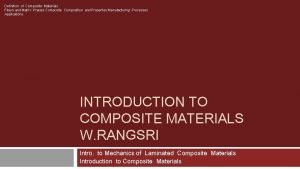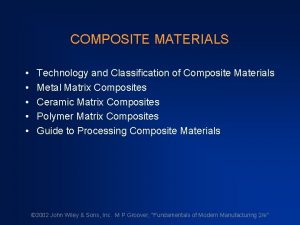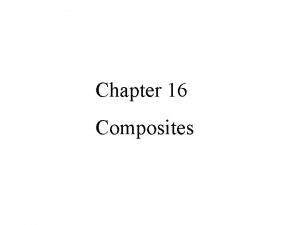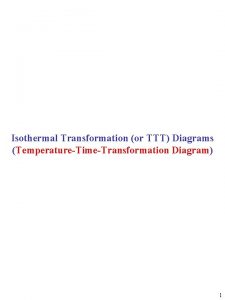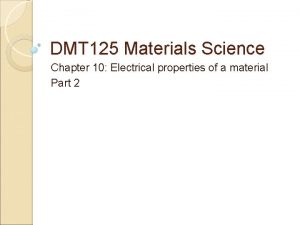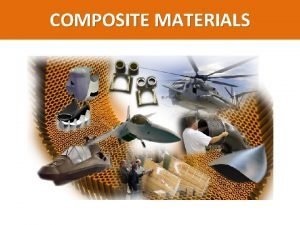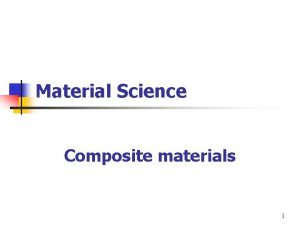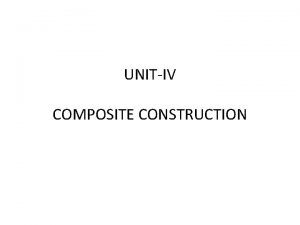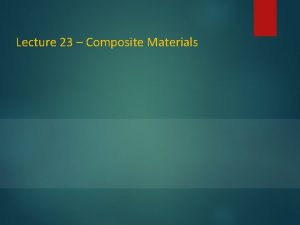NANTAI NVERSTES MATERIALS SCIENCE CHAPTER 11 COMPOSITE MATERIALS








- Slides: 8

NİŞANTAŞI ÜNİVERSİTESİ MATERIALS SCIENCE CHAPTER 11 - COMPOSITE MATERIALS Mühendislik Mimarlık Fakültesi mmf. nisantasi. edu. tr NİŞANTAŞI ÜNİVERS İTESİ ©

COMPOSITE MATERIALS A composite material can be defined as a combination of two or more materials that results in better properties than those of the individual components used alone. In contrast to metallic alloys, each material retains its separate chemical, physical, and mechanical properties. the two constituents are a reinforcement and a matrix. the main advantages of composite materials are their high strength and stiffness, combined with low density, when compared with bulk materials, allowing for a weight reduction in the finished part. NİŞANTAŞI ÜNİVERSİTESİ © Typical reinforcement types

MAJOR POLYMER MATRIX COMPOSITE FABRICATION PROCESSES NİŞANTAŞI ÜNİVERSİTESİ ©

ISOTROPIC AND ANISOTROPIC MATERIALS Materials can be classified as either isotropic or anisotropic. Isotropic materials have the same material properties in all directions, and normal loads create only normal strains. By comparison, anisotropic materials have different material properties in all directions at a point in the body. there are no material planes of symmetry, and normal loads create both normal strains and shear strains. A material is isotropic if the properties are independent of direction within the material. NİŞANTAŞI ÜNİVERSİTESİ ©

LAMINATES When there is a single ply or a lay-up in which all of the layers or plies are stacked in the same orientation, the lay-up is called a lamina. When the plies are stacked at various angles, the lay-up is called a laminate. NİŞANTAŞI ÜNİVERSİTESİ ©

Compa rison O f Tensile Properties O f Fiber , Ma tr ix, And Composite NİŞANTAŞI ÜNİVERSİTESİ ©

EFFECT OF FIBER AND MATRIX ON MECHANICAL PROPERTIES NİŞANTAŞI ÜNİVERSİTESİ ©

REFERENCES 1. F. C. Campbell, Chapter 1 Introduction to Composite Materials, Structural Composite Materials 2010, ASM International NİŞANTAŞI ÜNİVERSİTESİ ©
 Nantai cash
Nantai cash Nantai 37
Nantai 37 Douglas fir modulus of elasticity
Douglas fir modulus of elasticity What is her favourite subject?
What is her favourite subject? Definition of matrix in composite materials
Definition of matrix in composite materials Classification of composite materials
Classification of composite materials Classification of composites
Classification of composites Introduction to materials science for engineers chapter 10
Introduction to materials science for engineers chapter 10 Introduction to materials science for engineers chapter 10
Introduction to materials science for engineers chapter 10




